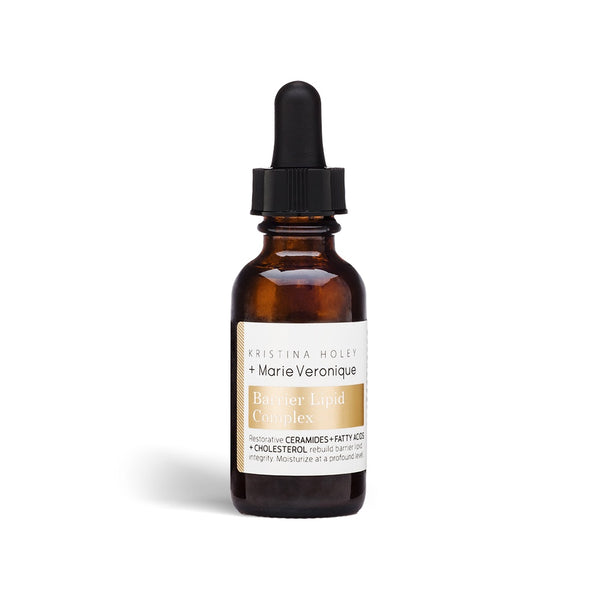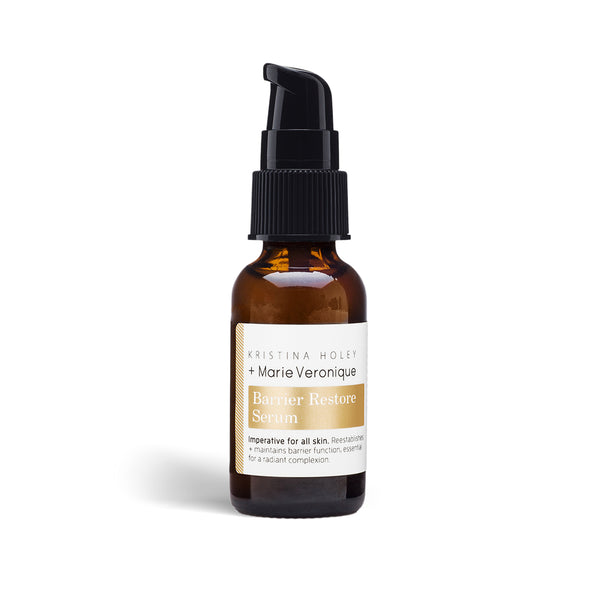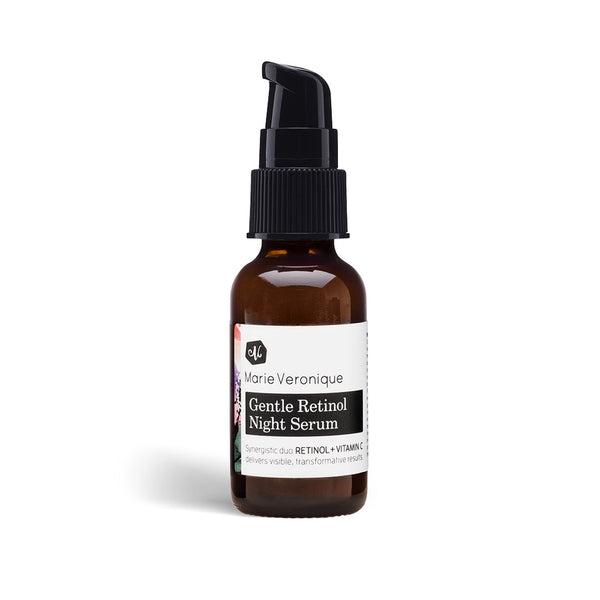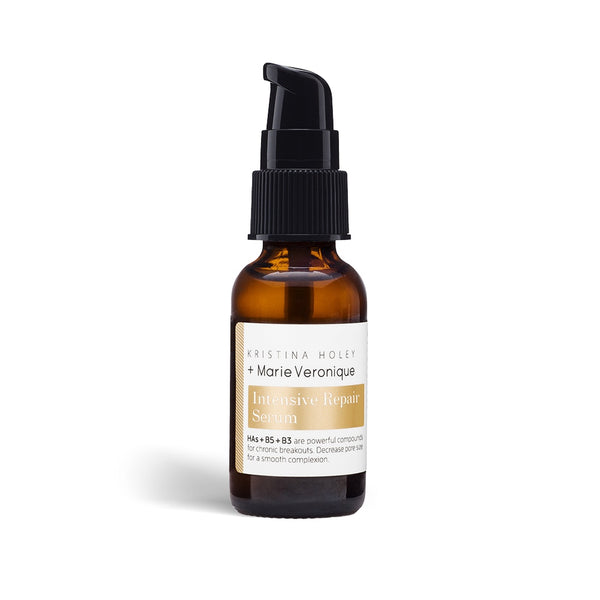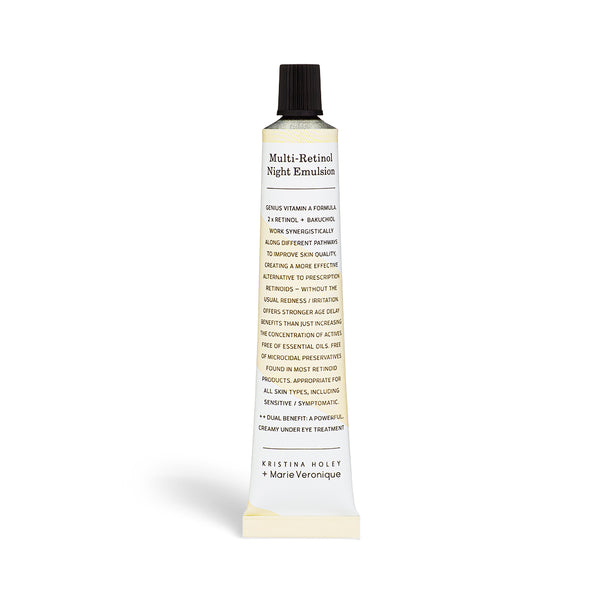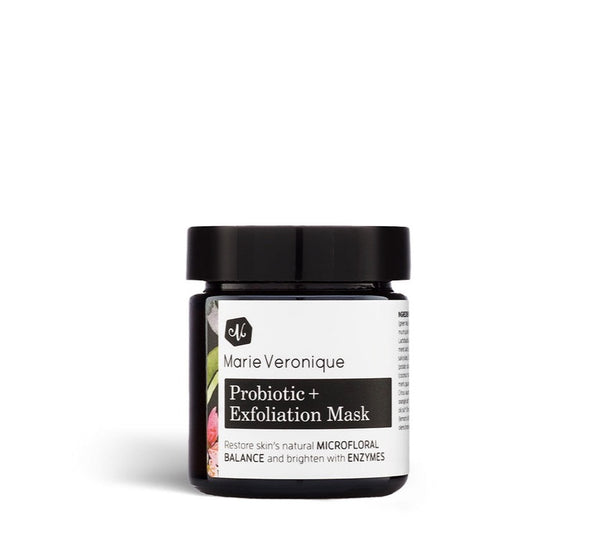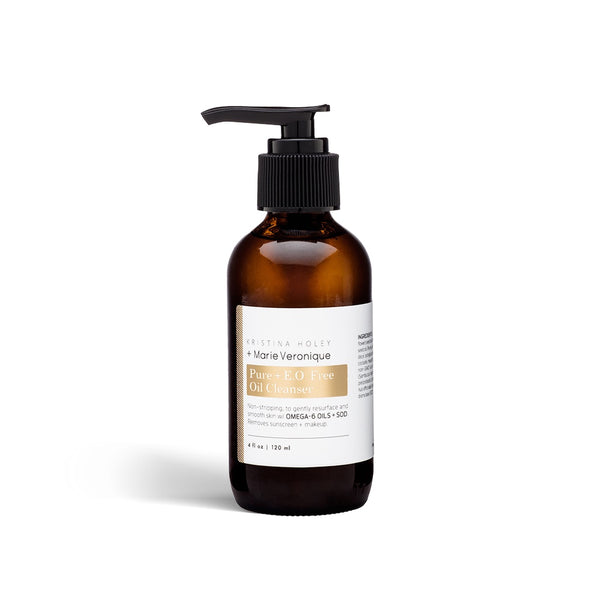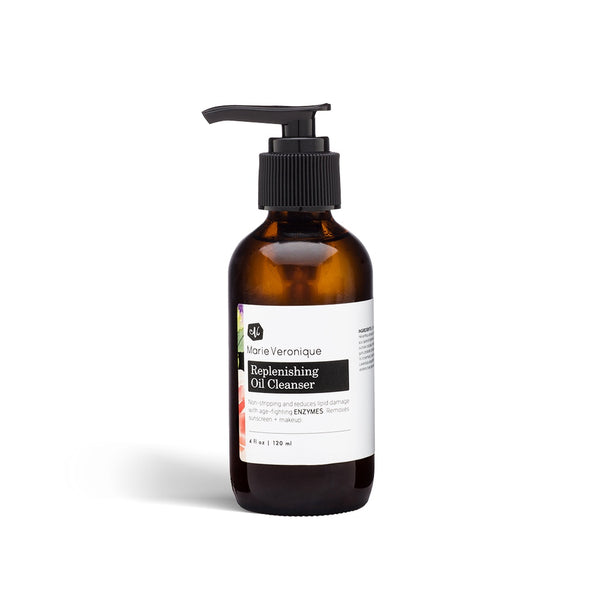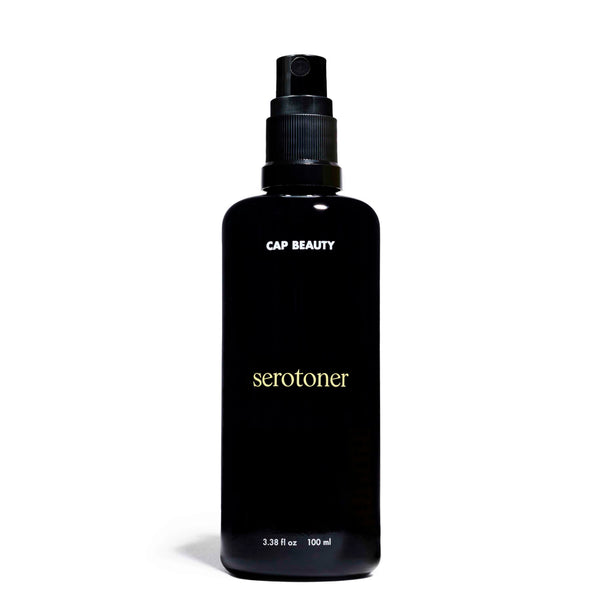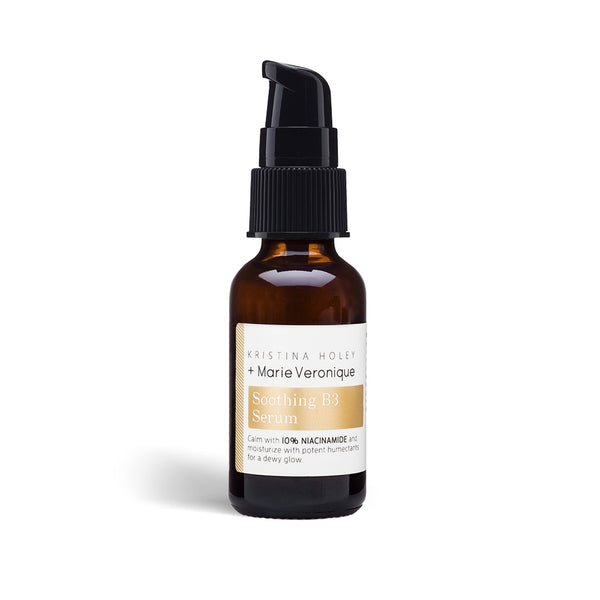Can you tell us a bit more about the research and science that went into creating Multi-Retinol Night Emulsion (MRNE)?
The thinking behind this product started with the premise that: inflammation is the main driver of the disease and aging process. We even coined a word for it — “Inflammaging.”
Inflammaging is the age-related increase in levels of pro-inflammatory markers in blood and tissues, including skin. It is a strong risk factor for diseases and inflammation, however, it can be tackled with active ingredients such as certain vitamins that have the right beneficial effects. The star among the list of ingredients that provide anti-inflammatory, anti-oxidant, and age-delay effects is retinol, an oil soluble Vitamin A derivative.
It is a must-have in skin care and outweighs all the downsides to using it, which of course is legion. The rule of thumb in formulation is that, the more unstable an ingredient is the more potential it has to deliver benefits. It’s why some ingredients, like Vitamin C and A, are called “actives,” as they are active from a chemistry perspective. They are also very problematic to work with.
The challenges to working with retinol include but are not limited to:
1. There is still some public resistance to using retinol, though we have worked hard to dispel some of the alarmist myths and misunderstandings surrounding it.
2. Retinol from the formulation perspective is an absolute nightmare; it is extremely vulnerable to external conditions, degrades in presence of oxygen, and light and temperature must be controlled at all stages of the preparation.
3. Then there is the question of safety. We don’t want to use preservatives that have a bad track record, but this is a problem when you are working with an ingredient as unstable as retinol. In Multi-Retinol Night Emulsion the trans retinol itself is stabilized by encapsulation, and Vitamin E, an oil-soluble stabilizer, is used in the overall formula as well.
All in all, anyone working with retinol is faced with many challenges, but it’s well worth it, as long as you get it right. Our goal is to create smart, science-based formulations that deliver important ingredients to the skin in a way that leaves customers safe, while still being able to enjoy the benefits of improved skin quality, regardless of their age. Multi-Retinol Night Emulsion represents some of the best work we’ve done in terms of getting close to that goal.
Who did you create the MRNE for? What types of people and skin types benefits most?
Multi-Retinol Night Emulsion contains active retinol in different forms that address aging skin, acne, and other conditions such as dermatitis where inflammation is an issue. For me, inflammaging is the big issue since I am closer to the end of my life than the beginning, and I don’t want to accumulate too many wrinkles along the way.
So naturally, that is the group we had in mind when we created this product, meaning the 40+ crew. But it also helps with acne and to alleviate conditions younger people are afflicted with.
Retinol's have a history of irritating the skin, what makes this one different?
No, this product will not cause irritation that typically accompanies prescription retinoids. Because of the combination of two retinoids + bakuchiol, you are supporting overall skin function by restoring integrity to all layers of the skin and restoring barrier function. Additionally, we added Sodium Palmitoyl Proline and Nymphaea Alba Flower Extract to reduce surface redness and increase availability of proline, a critical amino acid in protein. Therefore there is no risk of ending up with the raw, dry, sensitive skin you feel post prescription retinoid application.
How do you define "microbiome-friendly" skincare and how did you accomplish that with this, and all your products?
At Marie Veronique, our products are labeled as "microbiome friendly." This means:
1. They are formulated with minimal preservatives (the preservatives we do use are microstatic instead of bactericidal/microcidal).
2. If essential oils are used, they are for therapeutic purposes only and we are aware of their impact on the microbiome.
3. Most people have microbial dysbiosis to some extent on their skin, and we factor that into our formulations. So, for example, we believe there are various cases in which the existing microbiome needs to be modified in order to find balance and resolve symptoms. When necessary, we use antimicrobial agents to restrict the growth of certain species on the skin. When possible, we also add certain bacterial strains in to increase/promote the growth of certain species on the skin, promoting balance.
In Multi-Retinol Night Emulsion, our preservative of choice is a plant-based, postbiotic preservative derived from radishes, fermented with Leuconostoc kimchii, a lactic acid bacteria. It is microstatic, not microcidal, meaning the numbers and diversity of microbial populations in the skin microbiome remain at healthy, sustainable levels.
How does retinol combat acne?
Retinol has several mechanisms of action vis-à-vis acne where topical applications can make a difference.
For teenage acne: retinol causes a reduction in the size and secretion of the sebaceous glands.
For inflammatory and adult acne: retinol is anti-inflammatory.
For acne vulgaris and adult acne: retinol normalizes skin cell development and speeds up cell turnover rate, so dead skin cells don’t clog pores. In the case of inflammatory acne and acne vulgaris, where clogged pores attract bacteria that create infection, it’s important to stop the process before it gets started.
How does retinol combat aging?
Retinol’s extraordinary age delaying capabilities have been shown in many studies during the past few decades. Here are a few:
On the cellular level, the skin needs retinol to produce and preserve collagen and elastin, the main structural proteins of the extracellular space in the dermis. This connective tissue of the dermis provides strength and elasticity to the skin through an extracellular matrix composed of collagen and elastin fibers. These fibers are produced by fibroblasts and they weaken with age due to their reduced synthesis and increased degradation, leading to more sagging and less elastic skin.
The biochemical role of retinol is that of a cell messenger. After topical application it metabolizes in the skin as retinoic acid (RA) and acts as a transcription factor. Through RA receptors it affects the gene expression of fibroblast, thus sending signals to generate more collagen and elastin [2. Zasada, M., Budzisz, E., (2018), Adv. Dermatol. Allergol., 36, 4, 392-397;.3. Mukherjee, S., et al. (2006), Clinical Interv. In Aging, 1, 4, 327-348; 4. Rossetti, D., et al. (2011), Int. J. Cosmet. Sci., 33, 62-69], and it also enhances fibroblast production.
Retinol induces elastin gene expression and elastin fiber formation in fibroblasts by increasing mRNA and protein levels of tropoelastin and of fibrillin-1, an elastin accessory protein [4. Rossetti, D., et al. (2011), Int. J. Cosmet. Sci., 33, 62-69].
Besides collagen and elastin, we are beginning to discover that retinol benefits go deeper, at the cellular and cell-signaling level. One of its most remarkable features, which I repeat ad infinitum so people actually “get” the retinol message, is that topical applications of retinol can reverse signs of photo-aging, by, among other things, inducing epidermal hyperproliferation and a compact stratum corneum and altering cell signaling so that cells perform more like they did prior to reaching their senescent state.
In short, it is the only ingredient we know of that is capable of performing multi-layer and inter-and intra-cellular feats of age-reversal vis-à-vis the skin.
Can you share more about the three different retinols you’ve used for this formulation and why?
We have a guideline of retinol ABC’s informing our work.
They are:
1. You want to use either retinoic acid or trans-retinol that converts to retinoic acid for its age-delay, acne control benefits.
2. Trans-retinol is preferred because it is less irritating and more people can use it, therefore…
3. Since trans-retinol (the preferred) is very vulnerable to certain conditions that are unavoidable during the manufacturing process of the serum or cream, you have to stabilize it.
Multi-Retinol Night Emulsion exemplifies our approach to the critical issue of stabilization. First, the trans retinol in Multi-Retinol Night Emulsion is encapsulated, which lengthens its life span in the acidic medium which is destined to be its final home.
Combining bakuchiol with retinol is a good idea, whose time has come. Bakuchiol exhibits similar properties to retinol, working along different biological pathways, but it is very interesting in another respect that has been for the most part overlooked. Not only does bakuchiol deliver many retinol-type benefits it also deserves recognition as being the ideal complement to retinol in a formulation. Its inherent stability, as well as its stabilizing effect on retinol itself, combine to make it a perfect retinol optimizer. Putting retinol and bakuchiol together in a formula is safer and more defensible methodologically than continually increasing retinol concentrations. It’s just win-win, on so many levels.
In Multi-Retinol Night Emulsion we have tried to incorporate the best from both lab and nature with another ingredient from nature’s storehouse, in the form of the long-chain retinyl esters found in retinyl sunflowerseedate. These esters are more stable than retinol, and in addition they provide retinol-like benefits such as increased skin cell deposition at the epidermal level.
What's the best way to use the Multi-Retinol Night Emulsion?
This product is for nighttime use only. To use: cleanse, tone, and apply serums + oil as you normally would. Then to finish, smooth a dime-size amount of Multi Retinol Night Emulsion to the face, neck, and chest and massage in until completely absorbed. There is no need to pause after any steps in this process.
Note: it is absolutely fine to use Multi-Retinol Night Emulsion alone after cleansing + tonic/mist. Due to its creamy, rich texture, if you have oily, combination, or normal/stable skin you may feel that using Multi-Retinol Night Emulsion is sufficient.
Why is Multi-Retinol Night Emulsion applied last? Will it penetrate if using other serums and oils?
We suggest applying Multi-Retinol Night Emulsion last as it has a rich, cream-like texture that provides an emollient layer to the skin. Applying it over oils will actually enhance penetration for the product.
What are some signs that this product is working? Any markers to look out for?
My next door neighbor Theresa said it best: “On those nights when I get lazy and don’t use it, I see the difference the next day.” I’ve noticed that too. It is subjective, I know, so you might have to wait for other people to notice the differences, which at first may be subtle, but don’t worry, they will. Okay, markers for those who can’t wait for an outside verdict? Look for:
Short term (one month):
Because it induces skin cell deposition in the epidermis and creates a more compact stratum corneum, one of the first signs you may see is increased smoothness in the skin’s surface.
Because it increases deposition of glycosamine glycans (think hyaluronic acid) in the skin and improves water barrier protection, you may see an improvement in dry skin, if that is one of your issues.
Long term (> one month):
Because it increases deposition of collagen in the dermis you will notice, over time, a diminution of wrinkles, or your wrinkles aren’t as deep.
Last but not least, retinol, over time, has skin lightening effects. This is because when cells become normalized the healthy cells start to outnumber the skin cells damaged by UV exposure, thus, there is a proportional decrease in epidermal melanin.
Should Multi-Retinol Night Emulsion replace Gentle Retinol Night Serum in our regimen?
Gentle Retinol Night Serum combines an encapsulated retinol with stabilized Vitamin C. This much-loved PM regimen staple will happily support normal skin through its 20s, 30s, and early 40s. It remains our go-to for normal/stable aging skin and hyperpigmentation concerns. If you fall into these categories, this is still the best serum for you.
However, as skin matures in the mid-40s, we often need more intervention. Multi-Retinol Night Emulsion is the retinol we created for people who are looking for a topical that offers more intensive corrective action in the rich, creamy texture we like to use at night. It is best for those who’ve already been on a prescription retinoid or over-the-counter retinol and are looking to replace it with something that is both more effective and formulated without the harsh preservatives typically found in those products.
Free of fragrance and essential oils, Multi-Retinol Night Emulsion is also suitable for those of any age with compromised skin function and symptomatic inflammatory skin conditions.

